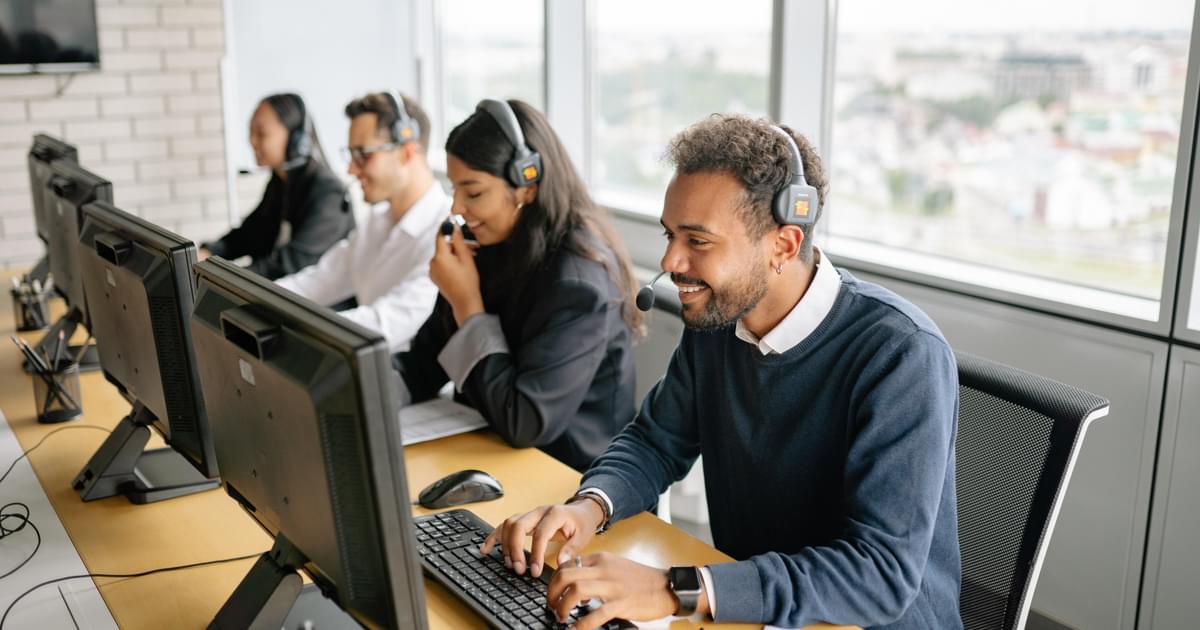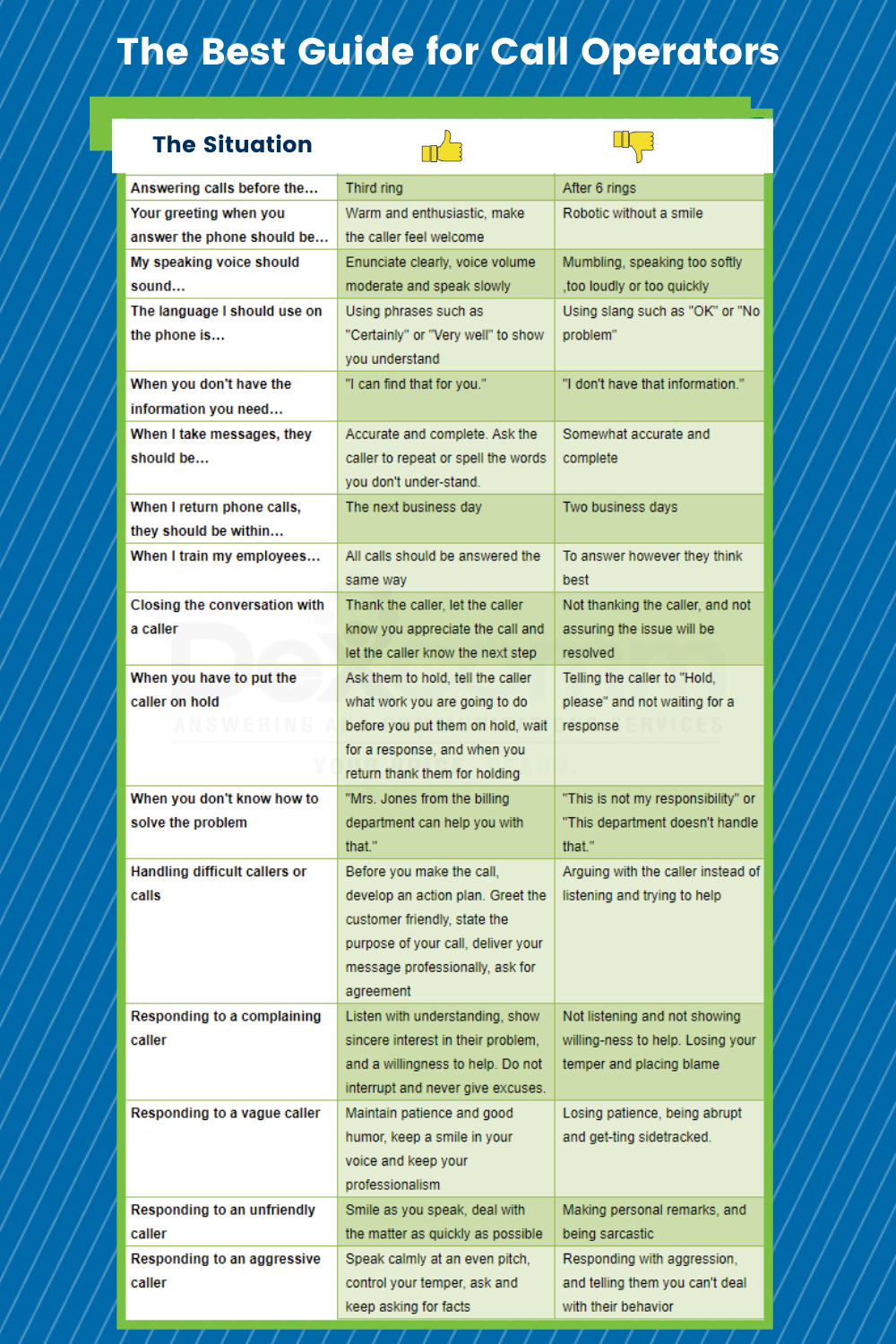All Categories
Featured
Table of Contents
- – What's The Best A Guide To Using Automated Answ...
- – What's The Best How Outsourced Phone Answering...
- – The Best What The Heck Is An Answering Service??
- – What Is The Best Benefits Of Answering Servic...
- – When Are Best 17 Reasons Why You Need A Telep...
- – Which Is The Best Answering Service Faqs - Q...
What's The Best A Guide To Using Automated Answering Systems Brand
This gadget and its followers were designed by Sava Jacobson, an electrical engineer with a private consulting company. While early answering devices utilized magnetic tape innovation, most modern equipment utilizes strong state memory storage; some devices utilize a mix of both, with a solid-state circuit for the outbound message and a cassette for the inbound messages.
"toll conserving" listed below) (phone answering). This works if the owner is screening calls and does not want to talk with all callers. In any case after going, the calling party needs to be informed about the call having actually been answered (in many cases this starts the charging), either by some remark of the operator, or by some welcoming message of the TAD, or addressed to non-human callers (e.
This holds specifically for the Little bits with digitally kept welcoming messages or for earlier machines (before the increase of microcassettes) with a special endless loop tape, different from a 2nd cassette, devoted to recording. There have actually been answer-only devices with no recording abilities, where the greeting message needed to notify callers of a state of present unattainability, or e (phone answering service).
What's The Best How Outsourced Phone Answering Service Can Help Your ... Brand

about accessibility hours. In taping Littles the greeting typically includes an invite to leave a message "after the beep". A voice mail that uses a microcassette to tape-record messages On a dual-cassette answerphone, there is an outgoing cassette, which after the defined variety of rings plays a pre-recorded message to the caller.

Single-cassette answering machines contain the outbound message at the start of the tape and incoming messages on the staying space. They first play the statement, then fast-forward to the next offered area for recording, then tape the caller's message. If there are lots of previous messages, fast-forwarding through them can trigger a significant delay.
This beep is often described in the greeting message, asking for that the caller leave a message "after the beep". Little bits with digital storage for the recorded messages do not reveal this hold-up, naturally. A little bit may provide a remote control center, whereby the answerphone owner can ring the home number and, by entering a code on the remote telephone's keypad, can listen to tape-recorded messages, or erase them, even when away from house.
The Best What The Heck Is An Answering Service??

Thereby the machine increases the number of rings after which it addresses the call (usually by 2, leading to 4 rings), if no unread messages are presently kept, however responses after the set variety of rings (generally two) if there are unread messages. This permits the owner to find out whether there are messages waiting; if there are none, the owner can hang up the phone on the, e.
Some makers likewise permit themselves to be remotely triggered, if they have actually been switched off, by calling and letting the phone ring a specific a great deal of times (normally 10-15). Some service suppliers abandon calls currently after a smaller variety of rings, making remote activation impossible. In the early days of Little bits a special transmitter for DTMF tones (dual-tone multi-frequency signalling) was regionally required for push-button control, considering that the previously employed pulse dialling is not apt to communicate proper signalling along an active connection, and the dual-tone multi-frequency signalling was carried out stepwise.
Any inbound call is not identifiable with regard to these properties in advance of going "off hook" by the terminal devices. So after going off hook the calls must be switched to suitable devices and only the voice-type is immediately accessible to a human, however possibly, nevertheless need to be routed to a LITTLE BIT (e.
What Is The Best Benefits Of Answering Service - Professional Services Company
What if I told you that you do not need to really pick up your gadget when answering a consumer call? Another person will. So practical, best? Responding to phone calls does not need somebody to be on the other end of the line. Effective automated phone systems can do the technique just as effectively as a live representative and often even better.
An automatic answering service or interactive voice action system is a phone system that interacts with callers without a live person on the line - phone call answering. When companies use this technology, customers can get the response to a question about your company merely by utilizing interactions set up on a pre-programmed call circulation.
Although live operators update the customer care experience, many calls do not need human interaction. An easy taped message or guidelines on how a client can recover a piece of information generally solves a caller's instant requirement - business call answering service. Automated answering services are an easy and reliable method to direct incoming calls to the ideal person.
When Are Best 17 Reasons Why You Need A Telephone Answering Service Sales
Notice that when you call a company, either for support or product inquiry, the very first thing you will hear is a pre-recorded voice greeting and a series of alternatives like press 1 for customer service, press 2 for queries, and so on. The pre-recorded alternatives branch out to other choices depending on the client's choice.
The phone tree system assists direct callers to the ideal person or department utilizing the keypad on a cellphone. In some circumstances, callers can utilize their voices. It deserves keeping in mind that auto-attendant choices aren't limited to the ten numbers on a phone's keypad. When the caller has chosen their very first option, you can design a multi-level auto-attendant that uses sub-menus to direct the caller to the best sort of support.
The caller does not have to communicate with an individual if the auto-attendant phone system can handle their concern. The automatic service can path callers to an employee if they reach a "dead end" and require assistance from a live representative. It is expensive to hire an operator or executive assistant.
Which Is The Best Answering Service Faqs - Questions & Answers
Automated answering services, on the other hand, are significantly less costly and provide considerable expense savings at approximately $200-$420/month. Even if you do not have devoted staff to deal with call routing and management, an automated answering service improves efficiency by permitting your team to focus on their strengths so they can more efficiently invest their time on the phone.
A sales lead routed to customer care is a lost shot. If a client who has item questions reaches the wrong department or receives incomplete responses from well-meaning employees who are less trained to manage a specific kind of concern, it can be a cause of aggravation and dissatisfaction. An automatic answering system can lessen the variety of misrouted calls, therefore assisting your employees make better use of their phone time while freeing up time in their calendar for other tasks.
With Automated Answering Systems, you can create a tailored experience for both your personnel and your callers. Make a recording of your primary greeting, and simply update it routinely to reflect what is going on in your company. You can create as numerous departments or menu alternatives as you want.
Table of Contents
- – What's The Best A Guide To Using Automated Answ...
- – What's The Best How Outsourced Phone Answering...
- – The Best What The Heck Is An Answering Service??
- – What Is The Best Benefits Of Answering Servic...
- – When Are Best 17 Reasons Why You Need A Telep...
- – Which Is The Best Answering Service Faqs - Q...
Latest Posts
Phone Answering Service Near Me ( Australia 2650)
Outstanding Receptionist Service Near Me – South East Queensland
Cost-Effective Call Answering Service Near Me – Perth 6019
More
Latest Posts
Phone Answering Service Near Me ( Australia 2650)
Outstanding Receptionist Service Near Me – South East Queensland
Cost-Effective Call Answering Service Near Me – Perth 6019